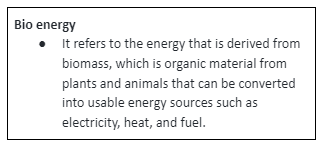Context:
A recent research project conducted by IIM-Bangalore, with technical assistance from the International Labour Organization (ILO), has performed an extensive examination of the employment generation prospects of the Jal Jeevan Mission (JJM).
More on News:
About Jal Jeevan Mission:
Need of Jal Jeevan Mission:
Key Features of JJM:
| State/ Union Territory | Central Share in % | State Share in % |
| Himalayan and North Eastern States | 90 | 10 |
| Other States | 50 | 50 |
| Union Territories with Legislature | 90 | 10 |
| Union Territories without Legislature | 100 | – |
| Tier | Mission | Role | |
| i. | National level | National Jal Jeevan Mission (NJJM) |
|
| ii. | State level | State Water and Sanitation Mission (SWSM) |
|
| iii. | District Level | District Water and Sanitation Mission (DWSM) |
|
| iv. | Gram Panchayat level | Paani Samiti/Village Water & Sanitation Committee (VWSC)/ User group |
|
Challenges Impeding the 2024 Har Ghar Jal Goal Goal:
Way Forward:
Jal Jeevan Mission (Urban):
|
Context:
Recently, The Union Home Minister introduced three Bills in the Lok Sabha to replace to replace, i.e IPC 1860, Indian Evidence Act 1872, and CrPc 1898.
More on News:
Criminal law in India is primarily governed by:
The Bills Introduced are:
History of the Criminal Justice System in India:

Criminal law reforms committee:
Need For the Bill:
Bharatiya Nyaya Sanhita Bill, 2023: key highlights of the proposed changes and additions
Bharatiya Nagarik Suraksha Sanhita Bill, 2023:
Bharatiya Sakshya Bill, 2023:
Concern with the Bill:
Conclusion:
The Bills propose changes, the true essence of overhauling the criminal justice system might not be fully realized. Achieving lasting change demands not only legislative amendments but also a comprehensive reevaluation of institutional cultures and practices, aiming for a more just and effective system.
Context: Central government is developing 11 industrial corridor projects across the country in a phased manner, as part of the National Industrial Corridor Programme.
About National Industrial Corridor Programme (NICP):

About National Industrial Corridor Development and Implementation Trust (NICDIT):

News Source: PIB
Context:
Recently, the Minister of State for Environment told the Rajya Sabha that Developed countries have consumed more than 80 per cent of the global carbon budget, leaving countries like India with very little carbon space for the future.
About Carbon Budget:
India and Carbon Budget:
News Source: BS
Context:
Recently, Union Health ministry proposed a separate post for the medical devices controller.
About the News
Central Drugs Standard Control Organisation (CDSCO)
|

News Source: BS
| G20 Finance Track seminar |
|
| Luna-25 |
|
| Tampara Lake |
|
| Digi Yatra |
|
| Niveshak Sarathi” Vans for Delhi-NCR |
|
| World Elephant Day |
|
| National Space Innovation Challenge 2023 (NSIC 2023) |
|
| Incremental Cash Reserve Ratio (I-CRR) |
|
SC Verdict on Newsclick Shows Adherence to Due Pro...
Stay Invested: On Chabahar and India-Iran Relation...
Credit Rating Agencies, Impact on India’s De...
Catapulting Indian Biopharma Industry
Globalisation Under Threat, US Import Tariffs Have...
Global Report on Hypertension, Global Insights and...
<div class="new-fform">
</div>
